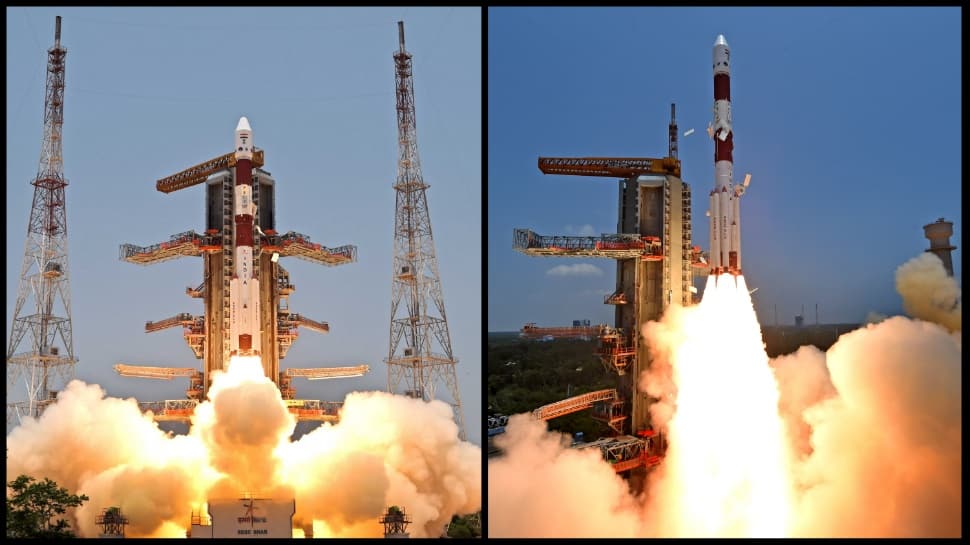[ad_1]
Sriharikota: The PSLV-C57.1 rocket carrying the Aditya-L1 orbiter, lifted off successfully from the Satish Dhawan Space Centre in Sriharikota, Andhra Pradesh at 11.50 am on Saturday. The successful launch of the maiden solar mission of the Indian Space Research Organisation (ISRO) came on the heels of the historic lunar landing mission — Chandrayaan-3.
#WATCH | Indian Space Research Organisation (ISRO) launches India’s first solar mission, #AdityaL1 from Satish Dhawan Space Centre in Sriharikota, Andhra Pradesh.
Aditya L1 is carrying seven different payloads to have a detailed study of the Sun. pic.twitter.com/Eo5bzQi5SO
— ANI (@ANI) September 2, 2023
The PSLV has placed the Aditya L-1 spacecraft into the intended orbit and from there it will now start its journey towards the Sun-Earth L-1 point or the Lagrangian Point 1 which is nearly 15 lakh Km away from the earth.
#WATCH | On the successful launch of Aditya L-1, ISRO Chairman S Somanath says, “The Aditya L1 spacecraft has been injected in an elliptical orbit…which is intended very precisely by the PSLV. I want to congratulate the PSLV for such a different mission approach today to put… pic.twitter.com/ZGT8vGt9EI
— ANI (@ANI) September 2, 2023
Aditya L-1 To Travel 15 Lakh Km In The Direction Of Sun
It will be placed in a halo orbit around Lagrangian Point 1 (or L1), which is 1.5 million km away from the Earth in the direction of the sun. It will carry seven different payloads to have a detailed study of the sun, four of which will observe the light from the sun and the other three will measure in-situ parameters of the plasma and magnetic fields. The largest and technically most challenging payload on Aditya-L1 is the Visible Emission Line Coronagraph or VELC.
PSLV-C57/Aditya-L1 Mission:
The launch of Aditya-L1 by PSLV-C57 is accomplished successfully.
The vehicle has placed the satellite precisely into its intended orbit.
India’s first solar observatory has begun its journey to the destination of Sun-Earth L1 point.
— ISRO (@isro) September 2, 2023
VELC was integrated, tested, and calibrated at the Indian Institute of Astrophysics’ CREST (Centre for Research and Education in Science Technology) campus in Hosakote in collaboration with ISRO. This strategic location will enable Aditya-L1 to continuously observe the sun without being hindered by eclipses or occultation, allowing scientists to study solar activities and their impact on space weather in real time. Also, the spacecraft’s data will help identify the sequence of processes that lead to solar eruptive events and contribute to a deeper understanding of space weather drivers.
Aditya-L1 started generating the power.
The solar panels are deployed.
The first EarthBound firing to raise the orbit is scheduled for September 3, 2023, around 11:45 Hrs. IST pic.twitter.com/AObqoCUE8I
— ISRO (@isro) September 2, 2023
What Will Aditya L-1 Do In Space?
Major objectives of India’s solar mission include the study of the physics of solar corona and its heating mechanism, the solar wind acceleration, coupling and dynamics of the solar atmosphere, solar wind distribution and temperature anisotropy, and origin of Coronal Mass Ejections (CME) and flares and near-earth space weather.
According to the Bengaluru-based Indian Institute of Astrophysics, the atmosphere of the sun, the corona, is what is seen during a total solar eclipse. A coronagraph like the VELC is an instrument that cuts out the light from the disk of the sun, and can thus image the much fainter corona at all times,
Earlier, on August 23, India became the fourth country after the US, China, and Russia to have successfully placed a lander on the moon’s surface.
[ad_2]
